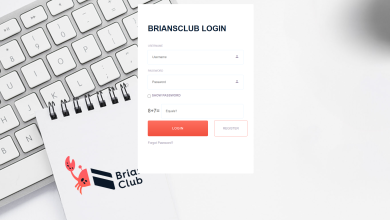Acquiring users is a pivotal challenge for any app developer or marketer. While building a great app is crucial, ensuring it reaches the right audience is equally important.
Here are six effective tactics to enhance your mobile app user acquisition strategy without any prior help from a mobile Application development company.
Optimize Your App Store Presence:
Begin by crafting an engaging and keyword-rich app description. Utilize relevant keywords that resonate with your target audience’s search queries. Ensure your app’s title is clear, concise, and mirrors the app’s core functionality.
How to make this strategy more impactful?
These crucial points will help you out:
- Create compelling content that showcases your app’s unique features and benefits. Encourage user interactions, respond to comments, and foster a sense of community around your app.
- Focus on optimizing your app’s icon, screenshots, and preview videos to captivate users’ attention and highlight your app’s value proposition.
- Invest in targeted advertising campaigns to reach your ideal users.
- Prioritize user experience enhancements based on this feedback, demonstrating your commitment to providing a valuable and user-friendly app.
Leverage Social Media Platforms
Social media is all about building relationships and fostering genuine connections. By leveraging its power effectively, you can propel your app into the limelight and create a dedicated community of users who love what you have to offer.
How Will You Do That?
- Define your target audience and identify the platforms they frequent the most.
- Tailor your content strategy to each platform’s unique vibe and audience preferences.
- Develop eye-catching visuals and videos that highlight your app’s key features and benefits.
- Encourage user engagement by posing questions, running polls, and initiating discussions about common pain points that your app can solve.
- Foster a community by showcasing user-generated content and success stories to inspire others.
- Experiment with different ad formats, such as carousel ads, video ads, and sponsored posts, to find what resonates best with your audience.
- Organize contests and giveaways that encourage user participation and promote your app simultaneously.
Incorporate Influencer Marketing
Leveraging the reach and credibility of influencers can significantly amplify your app’s presence and appeal.
How to Effectively Integrate Influencer Marketing?
- Look for influencers who have a genuine connection with their followers and align with your app’s niche.
- Demonstrate your knowledge of their content and express how your app can bring value to their audience.
- Build authentic relationships based on mutual trust and respect, fostering long-term partnerships rather than one-off promotions.
- Leverage their creativity to communicate your app’s utility effectively, catering to different audience preferences and consumption habits.
- Foster an interactive environment where users can ask questions, share insights, and provide valuable feedback, creating a sense of community around your app.
- Analyze key metrics such as user engagement, app downloads, and user retention rates to assess the effectiveness of each campaign.
- Stay adaptable, keep experimenting with different influencer collaborations, and consistently refine your approach to achieve sustainable growth for your app.
Run Targeted Ad Campaigns
With the right strategies, you can ensure that your ad campaigns reach the users who are most likely to engage with your app.
How to effectively run targeted ad campaigns for your mobile app?
- Define specific goals for your ad campaigns, such as increasing app downloads, boosting in-app purchases, or enhancing user engagement.
- Ensure your objectives align with your overall app marketing strategy for cohesive and effective results.
- Platforms like Google Ads, Facebook Ads, and Instagram Ads can offer extensive reach and targeting options.
- Utilize detailed targeting options provided by the advertising platforms, such as age, location, interests, and device types.
- Leverage advanced targeting features, including custom audiences and lookalike audiences, to expand your reach and connect with users similar to your existing customer base.
- Develop engaging and visually appealing ad creatives that effectively communicate your app’s value proposition.
- Use clear and concise messaging that highlights your app’s key features and benefits, compelling users to take action.
- Conduct A/B testing for different ad variations, including visuals, ad copy, and calls-to-action, to identify the most effective combinations.
- Analyze the performance metrics to determine which ad elements resonate best with your target audience and drive the desired actions.
Offer Incentives and Referral Programs
Introducing incentives and referral programs into your mobile app user acquisition strategy can be a game-changer. It’s not just about getting users; it’s about keeping them engaged and excited.
How can you effectively integrate these strategies into your app?
- Offer a compelling incentive for users to sign up for your app. It could be a discount on their first purchase, access to exclusive content, or a free trial of premium features.
- Make sure the incentive is valuable enough to prompt immediate action.
- Implement a user-friendly referral system that allows users to share their unique referral links effortlessly.
- Make sure the referral process is clear, straightforward, and integrated seamlessly within the app’s interface. The more enticing the reward, the more likely users will be motivated to spread the word.
- Create fun challenges, levels, or milestones that users can achieve through referrals.
- Offer badges, points, or other virtual rewards to incentivize users to participate and compete with their friends actively.
- Clearly outline the criteria for receiving rewards and ensure users understand the steps they need to follow to qualify.
- Transparency fosters trust and encourages users to participate without any ambiguity actively.
- Analyze data related to user engagement, acquisition, and retention to understand which strategies are working effectively and which ones need adjustment.
Collect and Analyze User Feedback
User feedback is like having a direct conversation with your users, understanding their needs, and improving your app based on their experiences.
How do we collect and analyze user feedback effectively?
- Keep the questions short and focused, asking about their overall experience, any issues they faced, and suggestions for improvement.
- Encourage honest feedback by making the process hassle-free and expressing genuine gratitude for their time and input.
- Analyze this data to identify patterns, understand user preferences, and pinpoint areas where users might be facing challenges or dropping off.
- Engage in these discussions, address concerns, and take note of any recurring themes or issues that users frequently mention.
- Acknowledge each submission promptly, showing users that their feedback is valued and taken seriously.
- Categorize feedback into actionable items, addressing critical issues first while planning for long-term enhancements based on user suggestions and preferences.
Bottom Line!
By implementing these tactics, you can optimize your mobile app user acquisition strategy and app development timeline and can foster sustainable growth for your app. Stay attuned to the evolving trends and preferences of your target audience, and continuously adapt your approach to ensure your app remains relevant and appealing in the dynamic app market.





